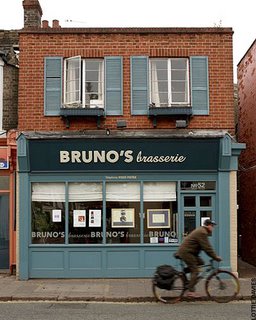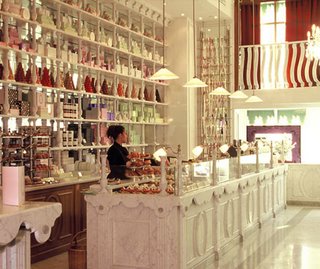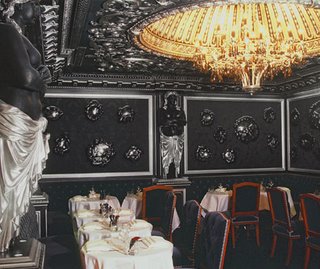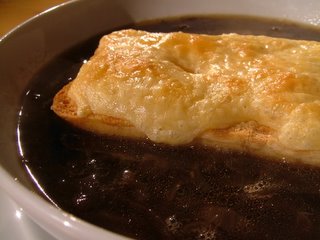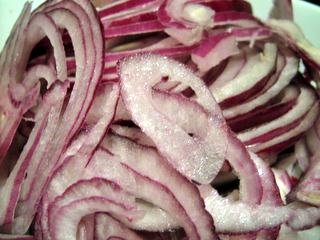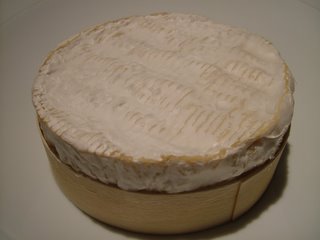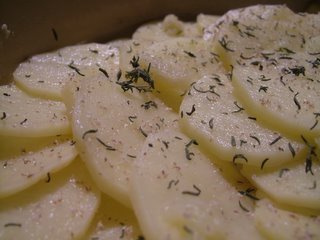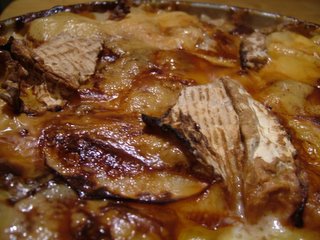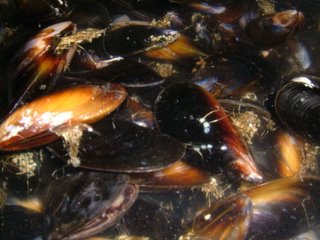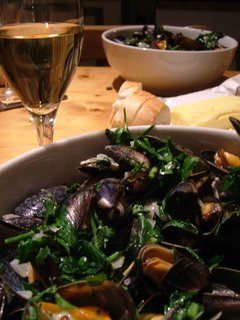I have a sense that Thomas Keller, one of America’s best chefs and a man with impeccable style and taste, doesn’t really do the Vegas thing. Bouchon, his Las Vegas outpost, feels positively out of time and place in this very modern, very garish city. By hiding it in a little-travelled corner of the sprawling Venetian Casino Resort, he’s successfully made it feel private, out-of-the-way and oddly genuine in a city full of fibreglass souks serving sushi. (It really is out-of-the-way, in a corner of the Venezia tower; from the car park you will need to take two separate elevators, and if you’re approaching from the casino you will have to swallow your pride and ask for directions, because it’s near-impossible to locate otherwise.)
Bouchon is a glorious Palladian room housing a Lyonnaise bistro (or ‘bouchon’), all marble-topped tables, encaustic tiles, sweeping arched windows, a pewter bar and pristine white-aproned serving staff. The restaurant has won a number of awards, many for its breakfast, and made Anthony Bourdain spit with rage over the French fries (of all things), which he admitted were better than the ones he serves at Les Halles. It serves what is, for my money, absolutely the best breakfast you will find in the city – we made a point of walking the two and a half miles from Mandalay Bay each time we went in order to burn as many morning calories as possible before arriving.
Breakfast diners are given complimentary butter, jam and an epi of freshly baked bread. Bouchon’s bakery has a giant reputation, and you’re well advised to sample the pastries on offer at the top of the menu alongside the excellent bread. Pains au chocolat are a beautiful example – hundreds of impossibly fine layers of flaky croissant dough, beautifully crisp outside and meltingly tender within, coiled around a stick of bitter chocolate – just begging to be dipped in your coffee. Even that coffee is something special; Chef Keller has selected the blend of four beans from all over the world, and it’s a beautiful, dark, chocolatey roast, fantastic with those pastries.
We used to live in Paris before we got married, and I haunted patisseries like Angelina, Laduree and Hédiard. I am utterly alarmed to find better pastries than were available in any of the famous Paris names in a place like Las Vegas. My favourite pastry was probably this cheese Danish – a cloud of sweetened cream cheese on the lightest, flakiest, melting-est Danish base I’ve ever encountered.
Breakfast entrées include Dr W’s favourite, the Bouchon French Toast. This is prepared bread pudding style – a tower of hot, custardy brioche, studded with jewels of cooked apple, drizzled with maple syrup and garnished with thin, thin slices of raw apple. If held at gunpoint, I couldn’t choose between the amazingly light and flavourful boudin blanc with beurre noisette and scrambled egg (the only quibble I had over a few meals at Bouchon – these eggs weren’t among the best I’ve eaten, being rather dry and hard) and the croque madame, which oozes glorious bechamel and Gruyère. That croque madame comes with the pommes frites which made Tony Bourdain enter a deep depression, and they’re very good indeed. They’re dry, crisp, fluffy inside, and hard to stop eating. But for French fry perfection in Las Vegas I recommend that you visit Stripsteak, a Michael Mina restaurant at Mandalay Bay, where the trio of duck fat fries (always served as an amuse bouche, and also available as a side dish) – one pot with paprika dusting and a barbecue sauce, one with truffles and a truffle aïoli, and one with herbs and a home-made ketchup – are far and away the best I’ve ever eaten.
Bouchon always offers a few daily specials on the blackboard. Peekytoe crab hash with onion confit, a poached egg and hollandaise was, according to the lady at the next table, ‘Perfect. Gorgeous.’ Dr W’s tomato, bacon and spinach omelette with sharp cheddar was a simple preparation presented brilliantly. And Keller’s quiches are justifiably famous – tender, moist and delicious, with a brittle, short crust.
Service here was charming and unobtrusive. On each visit, our waiters were very happy to answer questions (even rather technical ones about the sourcing of ingredients), and refilled coffee and water unobtrusively.
As you’ve probably gathered by looking at the number of dishes mentioned above, we didn’t feel much like eating breakfast anywhere else once we’d eaten our first Bouchon meal. Somehow, we didn’t manage to make it to the restaurant for an evening meal – I’m leaving supper at Bouchon as a treat for our next visit to Vegas, which is probably my favourite city for eating in the world.

